Sabah Craft- Batik Cloth
The first step in batik design would be to outline a sketch of the design the artist has in mind using a pencil as a rough guide.
Batik is an enchanting craft, and to my opinion a very Malaysian product that we can be proud of to showcase to the world. Its resurgance must surely be thanked to the various malaysian efforts to revive this ancient craft and to promote it especially from patronage of the late Datin Seri Endon who proposed the Batik Council as well as to organise the Batik Week in KL which has since turned into an annual event with fashion shows, parades and various promotional activities.
Once the design has been applied, wax will be traced using a canting to form the outline of the design.
Batik is most synonomous with the East coast states of Peninsular particularly that of Kelantan and Terengganu although to date many other states have come into their own with Batik Production. Often this was done as a cottage indutry and manually with labour intensive methods. The batik cloth can consists of any material the most usual is linen while the higher end products are usually made with silk. The process is a laborious affair involving first by drawing the designated designs using a pencil on the material. These designs can vary but the most traditional batik motifs consists of floral designs such as the pucuk rebung, free style flowers and various other patterns. Free hand drawing are the most common variety to apply the design although for mass production and repetitive designs a carved wooden block applied with wax is used to achieve mass production. Modern designs are also present to suit the growing taste of the current generation and many creative works have been showcased by up and coming designers. Veteran artists sometimes skip drawing a sketch and directly apply free style, waxing the surface design from conception.
Various colours are applied to the outlines, mixing several shades and varients to give the semblance of tones and styles.
Once the design has been determined the next step is to apply the wax onto the outlines. A canting which is a tool consisting of a metal wax holder and a narrow outlet that let wax flow out. Using the canting the batik designer would trace the patterns and the wax would set instantly as it flows out thus providing an outline for the application of the dye. The dyes are applied either in single monotone colours onto each of the waxed space or mixed with different shades to give tones and style to the design.
The finished design looks elegant but still has to be processed to remove the wax and to fix the colour before it can be truly finished.
The painted batik cloth still needs to undergo several processing steps before it can finally be completed. The wax layer would have to be removed by boiling the cloth in hot water with caustic acid soda to wash away the wax as well as several other chemicals to fix the colours onto the fabric as well as to give an additional luster to the material. The fabric would then be dried under the sun and later ironed and will finally be ready to be shaped and designed into various garments such as the baju kebaya.

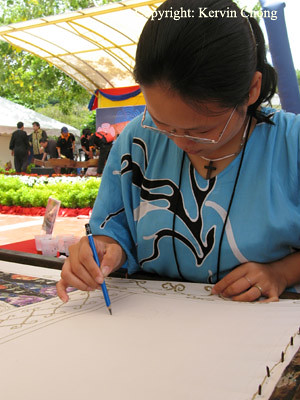
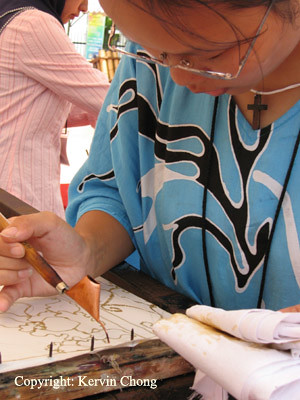
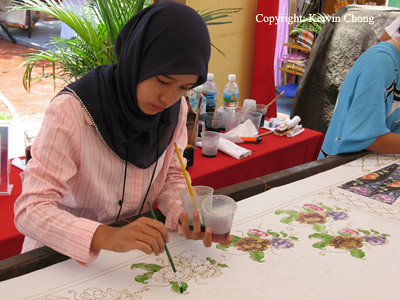
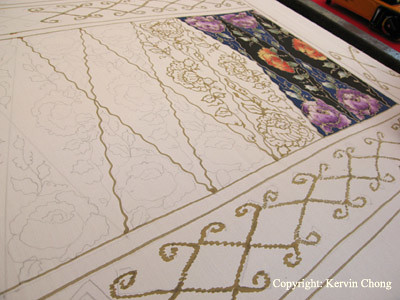
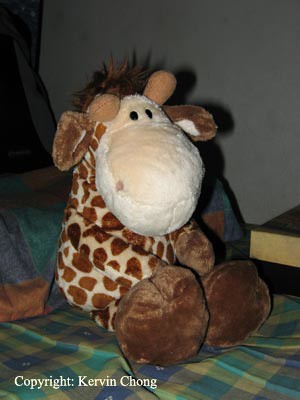

No comments:
Post a Comment